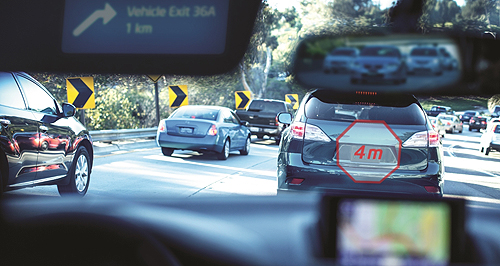SAIC-GM maps autonomous driving path
BY TUNG NGUYEN | 28th Mar 2017

The first stage of the connectivity plan involves building on the GM’s OnStar connectivity service, a subscription-based system which enables access to hands-free calling, navigation, remote vehicle diagnostics and vehicle tracking.
As of January this year, all new vehicles with OnStar connectivity in China will have five years of free basic service across the Buick, Chevrolet and Cadillac brands.
With hardware technologies found on SAIC-GM vehicles including adaptive cruise control and pedestrian collision detection, a special, around-the-clock OnStar team will now be employed to monitor the incoming data to ensure high levels of cyber security.
This year will also see the release of an all-new telematics system to provide SAIC-GM models with cloud-based computing of applications and services.
According to SAIC-GM, the new service “will put vehicle- and user-related data into self-hosted cloud storage to ensure security and personal ownership while opening the interface for full internet availability to allow car owners to access online services”.
These services will include real-time traffic navigation, news, weather, and access to online music and radio which will be saved to a personal account with settings transferable across different vehicles.
SAIC-GM envisions that smartphones could be used as virtual keys to start and access services in its connected vehicles.
Next year will introduce over-the-air updates to vehicles to ensure software is kept up-to-date with the latest security and software patches. New features and applications could also be rolled out via downloaded updates.
These advancements are all in an effort to build the foundation for SAIC-GM’s ambition of introducing autonomous driving technologies as early as 2019.
First, it will first roll-out its Super Cruise semi-autonomous system, which will use high-precision maps and GPS location data for partial self-driving capabilities.
2020 will then see the introduction of vehicle-to-infrastructure and vehicle-to-vehicle communications – collectively known as V2X – allowing SAIC-GM vehicles to talk to traffic lights and buildings, as well as other vehicles on the road.
Beyond that, the Chinese brand will utilise new and emerging technologies including a 5G data network, augmented reality technology and artificial intelligence to underpin its future connectivity and self-driving ambitions.
However, SAIC-GM's plans will be limited to the Chinese market only, with a Holdenspokesperson confirming there are currently no intentions to bring the new connected technologies Down Under.
"The announcement is for the Chinese market and not one for Holden to talk about," they said.
"But we've got our eyes firmly fixed on some ground-breaking next-gen technology and mobility and bringing it to Aussie customers.
"We've already conformed OnStar will be coming to the Australian market by 2020 and that we're currently running a pilot program for the innovative Maven ride-sharing business and platform here in Australia."